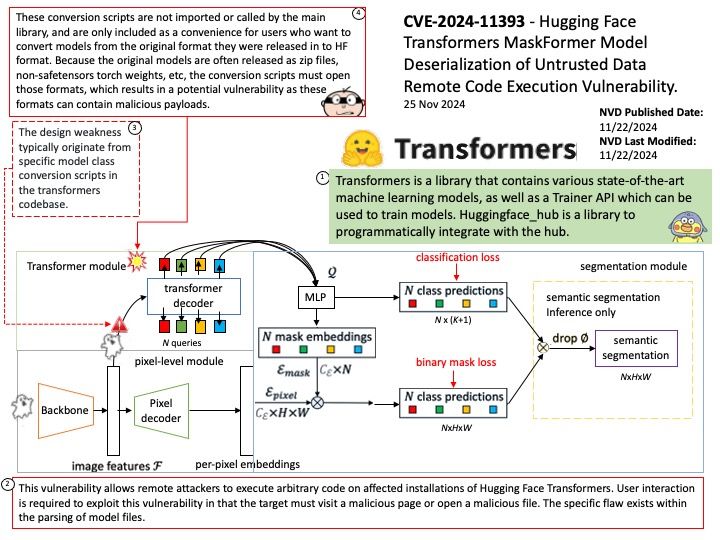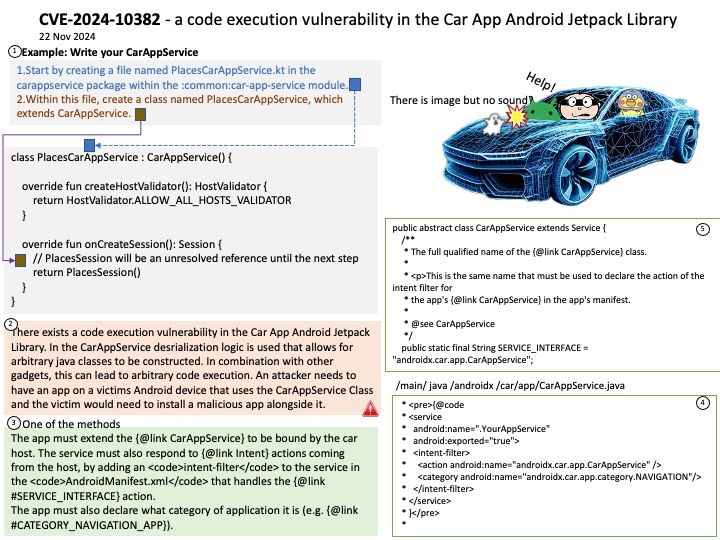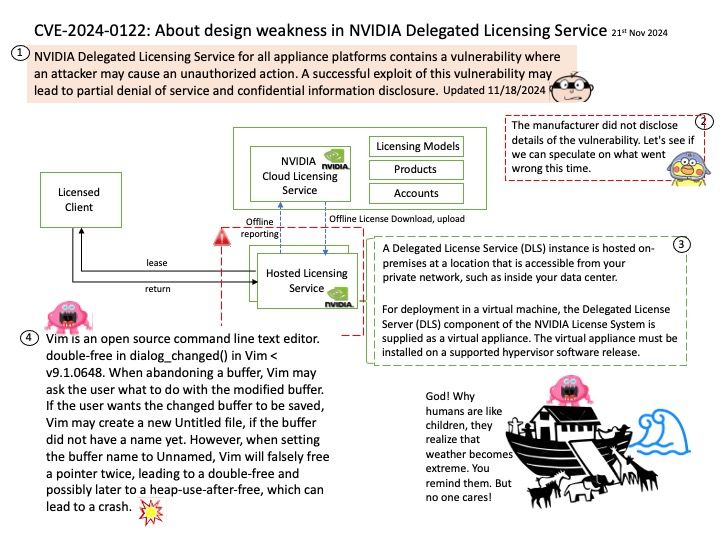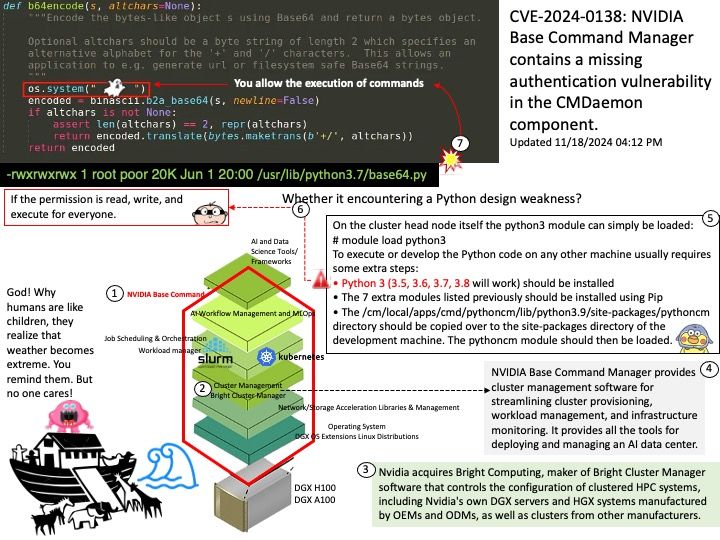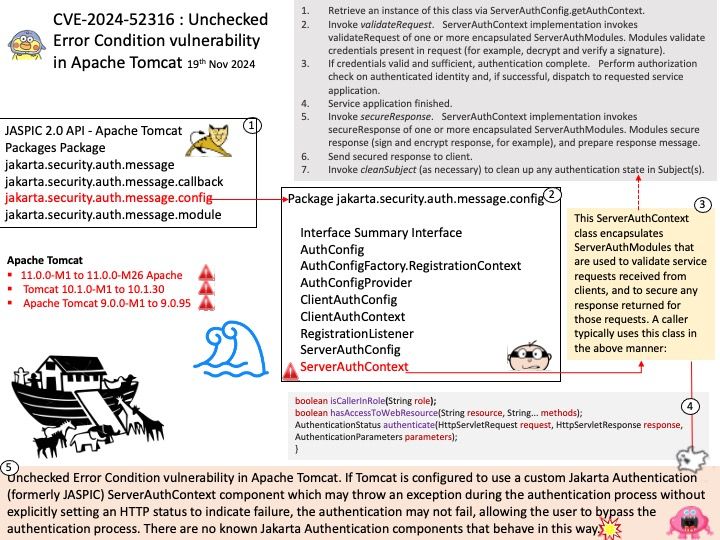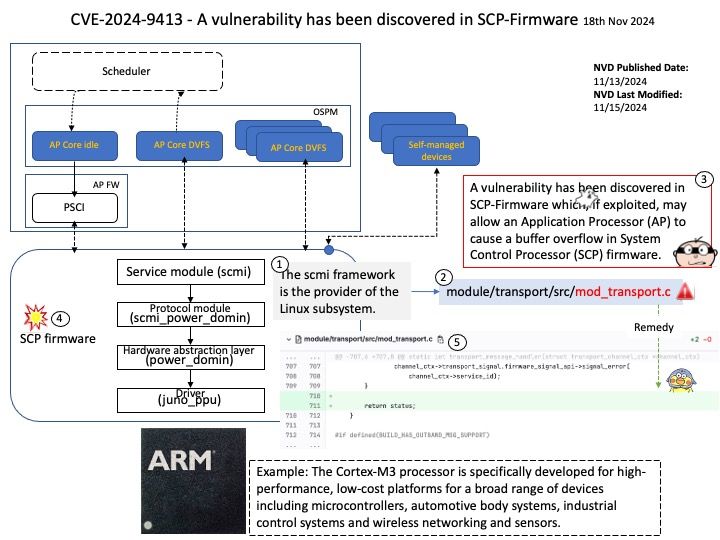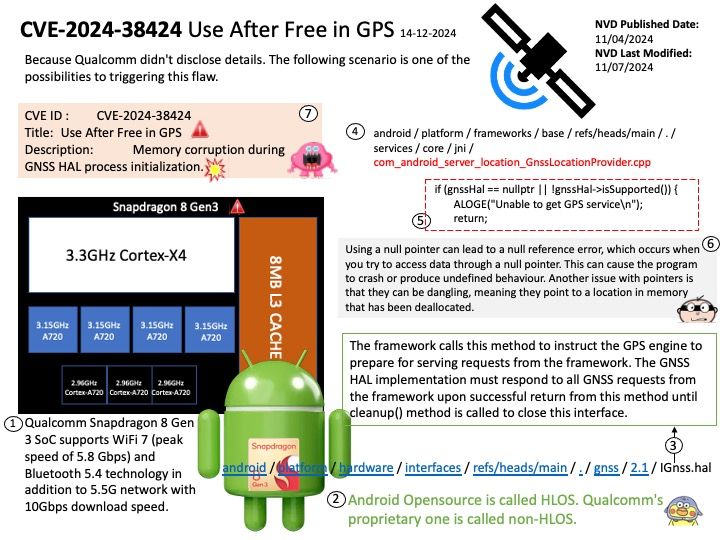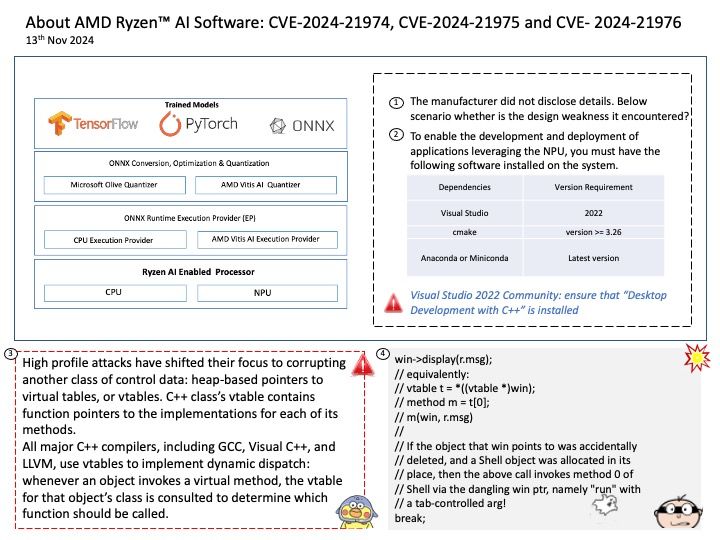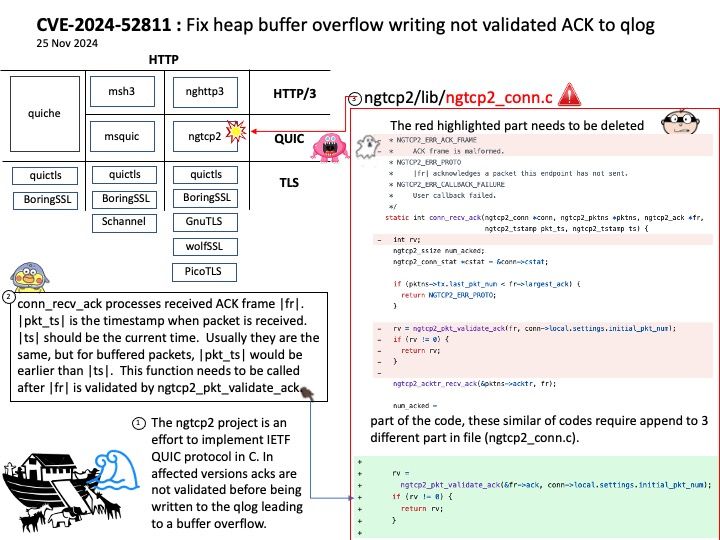
Preface: Most of Google’s traffic already goes through QUIC. Several other well-known companies have also begun developing their own implementations, such as Microsoft, Facebook, CloudFlare, Mozilla, Apple, Akamai,…etc
Background: By combining the best of TCP and UDP, along with encryption and better handling of modern network conditions, QUIC is set to become the foundation of faster, more secure, and more reliable internet experiences. ngtcp2 project is an effort to implement RFC9000 QUIC protocol.
Vulnerability details: The ngtcp2 project is an effort to implement IETF QUIC protocol in C. In affected versions acks are not validated before being written to the qlog leading to a buffer overflow.
In `ngtcp2_conn::conn_recv_pkt` for an ACK, there was new logic that got added to skip `conn_recv_ack` if an ack has already been processed in the payload. However, this causes us to also skip `ngtcp2_pkt_validate_ack`. The ack which was skipped still got written to qlog.
The bug occurs in `ngtcp2_qlog::write_ack_frame`. It is now possible to reach this code with an invalid ack, suppose `largest_ack=0` and `first_ack_range=15`. Subtracting `largest_ack – first_ack_range` will lead to an integer underflow which is 20 chars long. However, the ngtcp2 qlog code assumes the number written is a signed integer and only accounts for 19 characters of overhead (see `NGTCP2_QLOG_ACK_FRAME_RANGE_OVERHEAD`).
Therefore, we overwrite the buffer causing a heap overflow. This is high priority and could potentially impact many users if they enable qlog.
Remark: qlog is disabled by default. Due to its overhead, it is most likely used for debugging purpose, but the actual use is unknown.
Remedy: ngtcp2 v1.9.1 fixes the bug and users are advised to upgrade. Users unable to upgrade should not turn on qlog.
Official announcement: Please see the link below for details – https://nvd.nist.gov/vuln/detail/CVE-2024-52811
